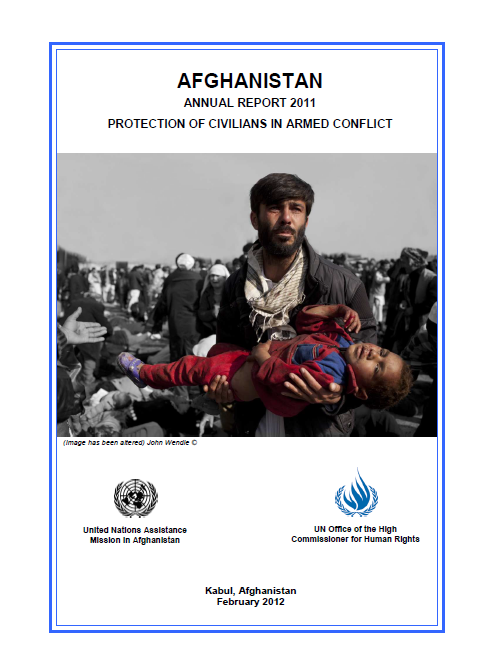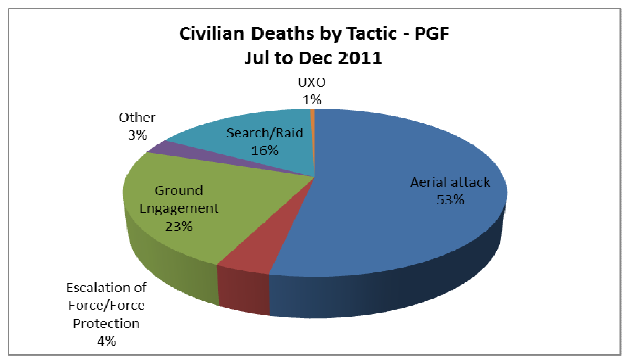The following report released by the United Nations Assistance Mission in Afghanistan (UNAMA) details the organization’s findings on the record number of Afghan civilian deaths that occurred in 2011.
AFGHANISTAN ANNUAL REPORT 2011: PROTECTION OF CIVILIANS IN ARMED CONFLICT
- 54 pages
- February 2012
A decade after it began, the armed conflict in Afghanistan again incurred a greater human cost in 2011 than in previous years. The United Nations Assistance Mission in Afghanistan (UNAMA) documented 3,021 civilian deaths in 2011, an increase of eight percent over 2010 (2,790 civilian deaths) and a 25 percent increase from 2009 (2,412 civilian deaths).
In 2012, UNAMA re-asserts the imperative for all parties to the conflict – Anti-Government Elements, and Afghan national and international military forces – to increase their commitment and efforts to protect civilians, and to comply fully with their legal obligations to minimize loss of life and injury among civilians.
…
Different Definitions of Civilian Casualties
UNAMA notes that civilian casualty figures may vary among organizations gathering and analyzing such information. Variations between ISAF and UNAMA in numbers of civilians killed and injured in the conflict arise from the use of different methodologies, different levels of access to locations and incidents of civilian casualties and different geographical coverage of the country.
ISAF notes this divergence may be attributed to the following factors:
Figures for Afghan National Security Forces (ANSF) caused civilian casualties are not monitored by ISAF, and reporting of insurgent-caused civilian casualties is based on what is observed or on reports that can be confirmed by ISAF; it therefore presents an incomplete picture.”
ISAF further notes that UNAMA and ISAF use different definitions for civilian casualties regarding the categorization and entities that cause civilian casualties and differ on how civilian casualty events and numbers are confirmed. ISAF states that it includes only Afghan civilians in its statistics and not every noncombatant (armed and unarmed internationals, unarmed Afghans such as interpreters and international civilians such as tourists). ISAF’s statistics also include all civilians casualties identified as ISAF-caused and ANSF-caused civilian casualties when an ANSF unit is partnered with ISAF. Additional ANSF-caused civilian casualties reported or not reported to ISAF are excluded from ISAF’s figures. ISAF states it confirms civilian casualty incidents and numbers through ISAF HQ SOP 302 Edition 3 further to verification by a Joint Incident Assessment Team (JIAT).
UNAMA tracks and includes in its statistics civilian deaths and injuries resulting from the operations of ISAF, ANSF and Anti-Government Elements. UNAMA also proactively monitors, verifies and reports conflict-related killings of civilians including targeted killings by parties to the conflict. UNAMA relies on a wide range of sources to verify and confirm civilian casualties as noted above.
UNAMA does not claim the statistics presented in this report are complete; it may be that UNAMA is under-reporting civilian casualties given limitations associated with the operating environment.
…



